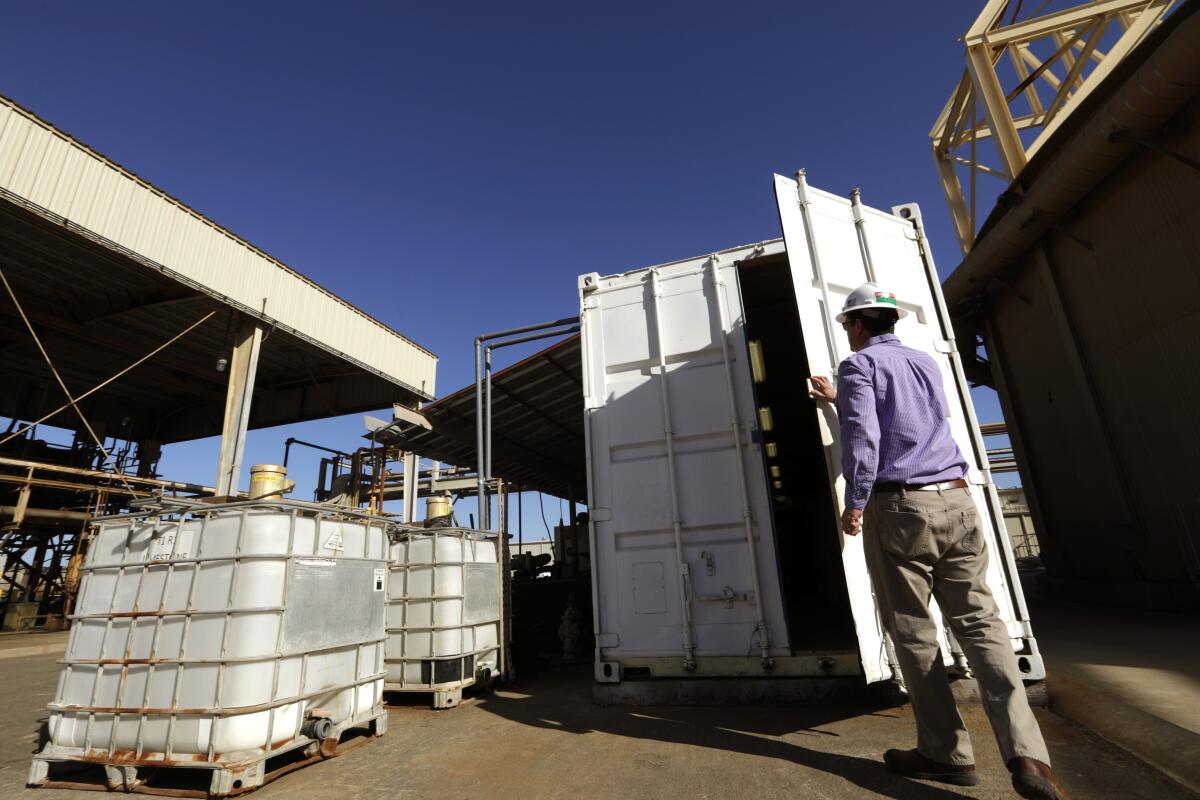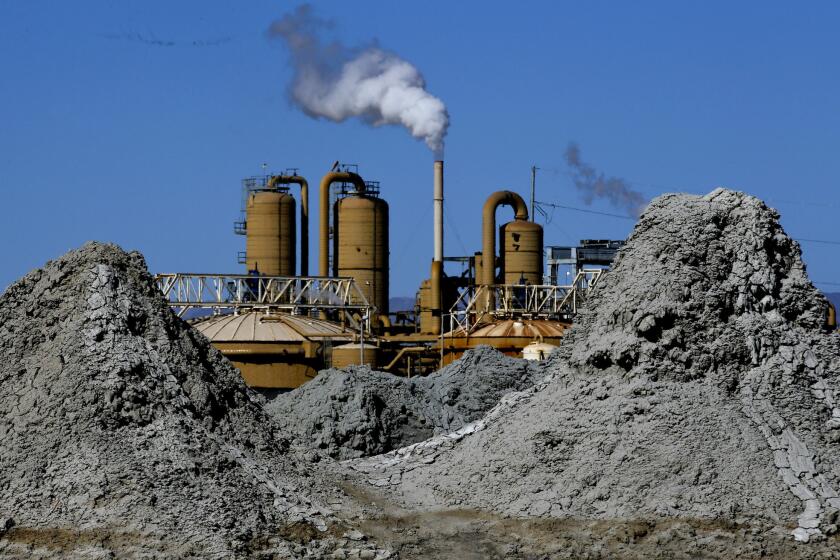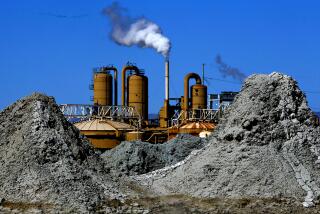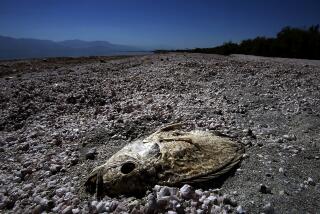Lithium start-up backed by Bill Gates seeks a breakthrough at the Salton Sea
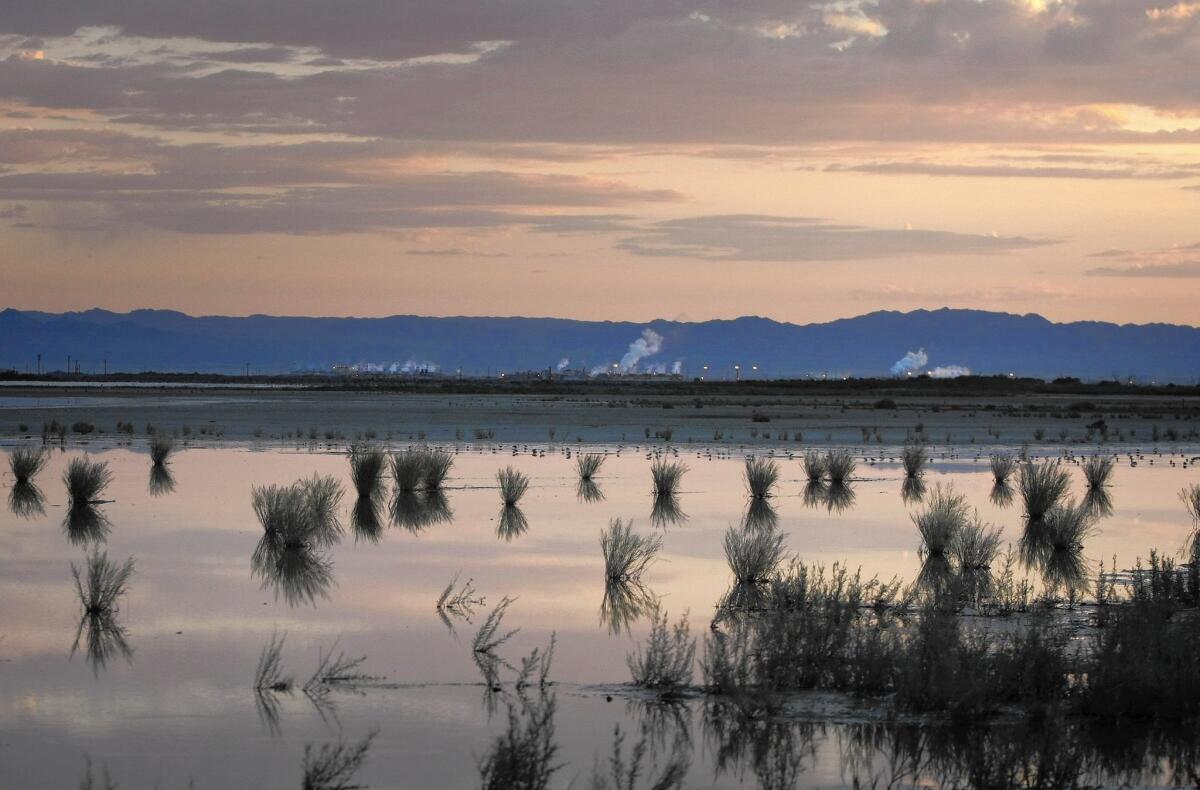
David Snydacker knew going in that California’s Imperial Valley was a “graveyard for lithium extraction technologies.”
For years, companies had tried and failed to find a cost-effective way to pull the valuable mineral — a key ingredient in the batteries that power electric cars — from the naturally heated fluid deep beneath the Salton Sea. One of the most recent busts was Simbol Materials, a much-hyped start-up that collapsed in 2015 shortly after Elon Musk’s Tesla Inc. offered to buy the firm for $325 million.
But several deep-pocketed investors think Snydacker’s technology may finally launch a new domestic clean energy industry.
His Oakland start-up, Lilac Solutions, recently announced a $20-million funding round led by Breakthrough Energy Ventures, which funds start-ups working to reduce planet-warming emissions. Breakthrough’s investors include three of the world’s 10 richest people: Microsoft Corp. co-founder Gates, Amazon Chief Executive Jeff Bezos and former New York City Mayor Michael R. Bloomberg.
On Monday, Lilac and the Australian company Controlled Thermal Resources announced they’re partnering to develop a lithium extraction facility at the Salton Sea. The Australian firm is trying to build the area’s first new geothermal power plant in a decade, a project that would be far more lucrative if the super-heated underground fluid could produce lithium in addition to electricity.
Lilac is also working with billionaire investor Warren Buffett’s Berkshire Hathaway Energy, which has not previously been reported outside energy industry circles.
Berkshire is one of several firms seeking funding from the California Energy Commission to build a lithium extraction demonstration plant. The plant would use Lilac’s technology, according to a letter from the Geothermal Resources Council, an industry trade group, urging state officials to fund Berkshire’s proposal.
A Berkshire subsidiary owns 10 of the 11 geothermal power plants currently operating at the southern end of the Salton Sea.
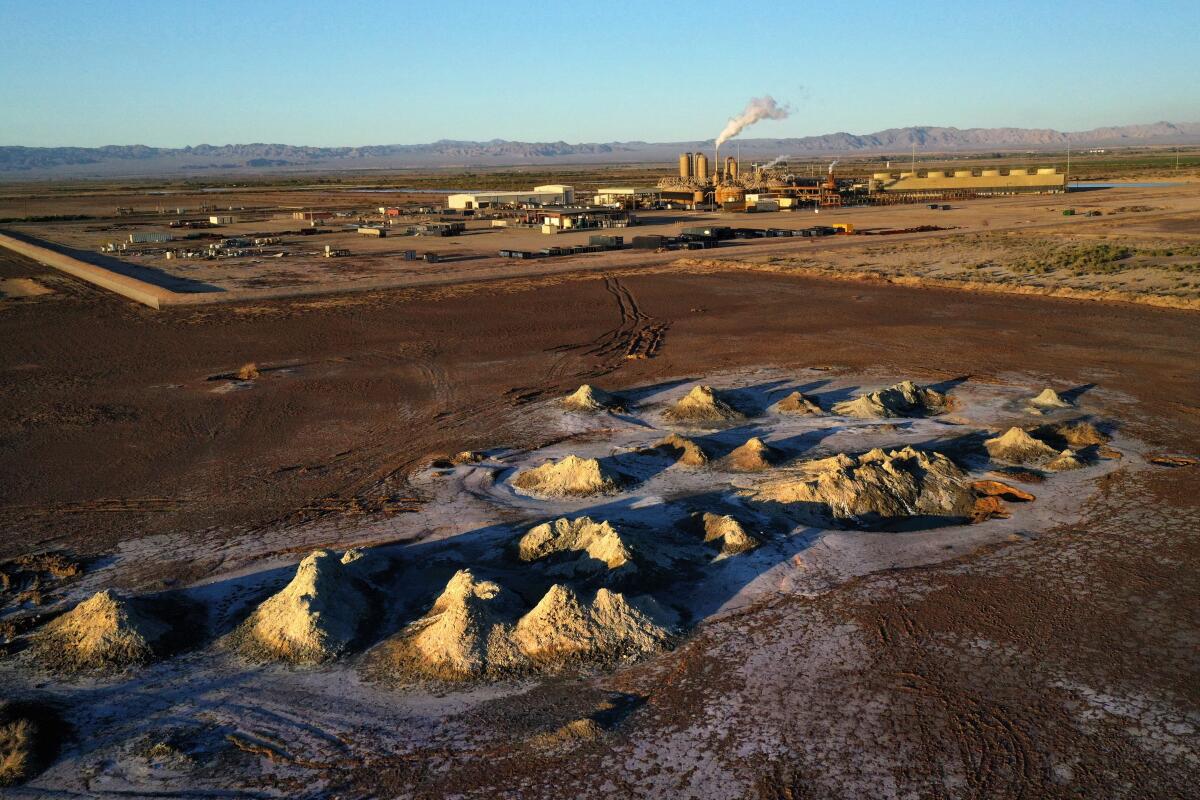
Snydacker was hesitant at first to go anywhere near the Salton Sea geothermal area because of the history of failed lithium projects.
But then Lilac started testing its proprietary technology on salt-rich waters — known as brines — from around the world. Snydacker said the technology worked so well at selectively pulling lithium from brines that he decided to give the Salton Sea resource a shot.
If Lilac succeeds, it could help fuel a global transition toward cleaner energy sources. That transition is a priority for the Golden State, where policymakers have set targets of slashing planet-warming emissions 40% by 2030 and 80% by 2050.
“There’s not a lot of big minerals projects that come online in California nowadays,” Snydacker said. “And what could be more relevant for the California economy than producing lithium?”
“If we don’t take dramatic steps toward electrifying vehicles and electrifying other aspects of industry, we’re going to have serious global problems,” he added.
Your support helps us deliver the news that matters most. Subscribe to the Los Angeles Times.
After years of playing third fiddle to solar and wind power, new geothermal plants are finally getting built.
There’s no shortage of lithium in the global marketplace, at least not yet.
But most of the battery-grade product produced today comes from environmentally destructive evaporation ponds in South America, and hard-rock mines in Australia. Environmentalists have long hoped for a cleaner source. National security hawks, meanwhile, see lithium as a crucial mineral that should be produced domestically, not abroad.
California Energy Commission Chairman David Hochschild described lithium as “the oil of the clean energy future.” He’s optimistic that Lilac Solutions might finally unlock the Salton Sea resource, adding to the clean energy economy of a state that already has about 700,000 electric vehicles and 17 electric-vehicle manufacturing plants.
“The analogy has been made to the Gold Rush, and I do think that’s apt,” Hochschild said. “It’s early days, still.”
The Los Angeles Economic Development Corp. sees California as a world hub for electric mobility.
Global lithium prices have fluctuated wildly in recent years, briefly rising above $20,000 per ton of lithium carbonate two years ago as demand outraced supply, before falling below $7,500 per ton as new mines came online, according to Benchmark Mineral Intelligence.
At the Salton Sea, the potential for big lithium revenues could help spur construction of new geothermal power plants, which are more expensive to build than solar and wind farms but can produce emissions-free electricity around the clock.
That’s the hope of Rod Colwell, Controlled Thermal’s chief executive. The company reviewed more than a dozen proposals before selecting Lilac as its lithium extraction partner. Controlled Thermal is planning to drill its first wells in the next three months so that Lilac can spend several weeks running its technology in field conditions, to inform final designs for the full-scale facility.
Colwell describes his company’s project as a lithium production facility first and a power plant second.
“You really want to compete in the global lithium market, which I think Imperial Valley can,” Colwell said. “We firmly believe that the Imperial Valley is in the first quartile of production costs globally.”
In addition to powering clean cars, lithium-ion batteries are increasingly used to store solar and wind power for use at night and during wind-less days. BloombergNEF projects that global lithium demand will grow from 300,000 tons in 2017 to 1.8 million tons in 2030.
Controlled Thermal hopes to produce more than 17,000 tons of lithium carbonate by 2023, then double that figure by 2025. Hochschild, from the California Energy Commission, said the Salton Sea geothermal area could eventually supply up to 200,000 tons.
Snydacker researched batteries and the lithium supply chain while getting his doctorate in materials engineering at Northwestern University, and he’s the lead inventor of Lilac’s technology. It’s an ion-exchange process that pushes mineral-rich brine through a bead-filled module that selectively absorbs lithium. Once the beads are saturated, Lilac uses acid to flush out the lithium.
The trick is in the material used for the beads, which Snydacker said is highly selective and more durable than the alternatives.
Lilac has 11 employees and has worked closely with the global engineering firm Hatch to validate its process. Snydacker said the company’s technology could also be applied to South American brines, reducing processing times and environmental impacts.
The start-up has raised $24 million overall but doesn’t have any commercial projects online yet.
Berkshire Hathaway and Controlled Thermal aren’t the only energy companies looking to produce lithium at the Salton Sea.
The area’s newest geothermal plant is operated by San Diego-based EnergySource, which developed its own lithium extraction technique that it says combines several commercially proven technologies. The company is testing the technique at its geothermal plant and says it has produced kilograms of battery-grade lithium.
EnergySource estimates it needs to raise $350 million to build a commercial-scale extraction facility.
“We’ve got leads, people that we’re actually exchanging terms with on the offtake side for lithium. And we’re also in discussions with people who would be there with us to finance the project,” said Eric Spomer, the firm’s president and chief executive.
